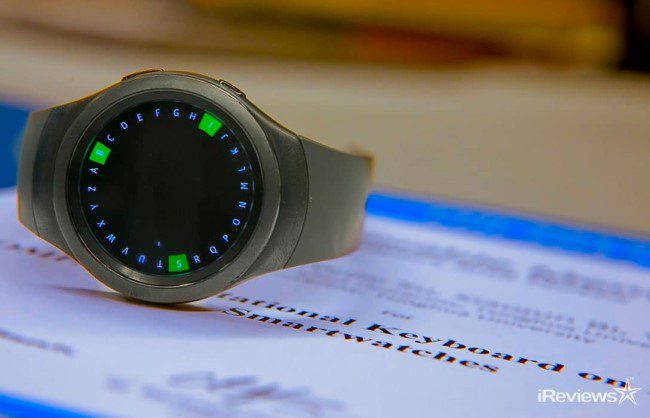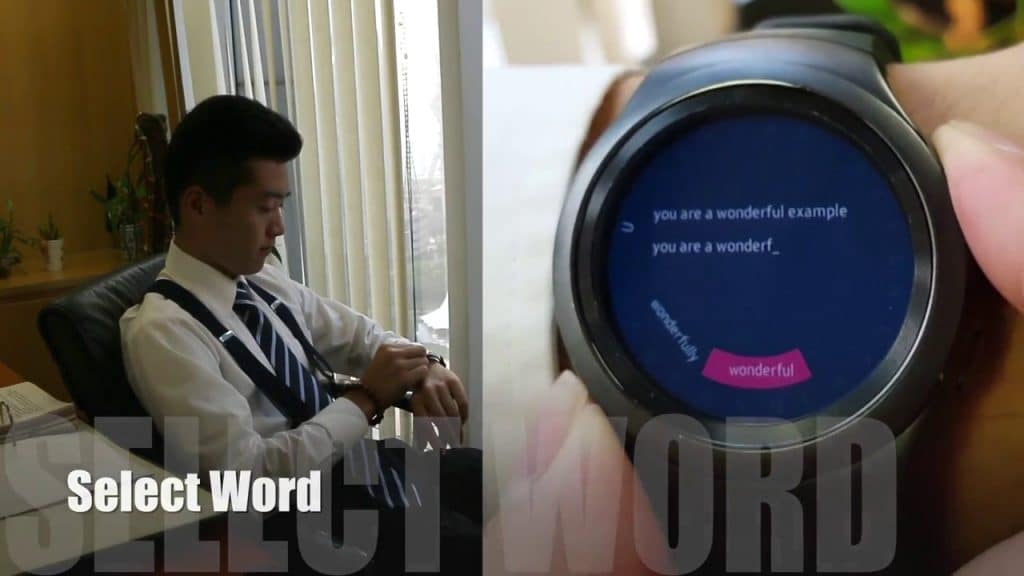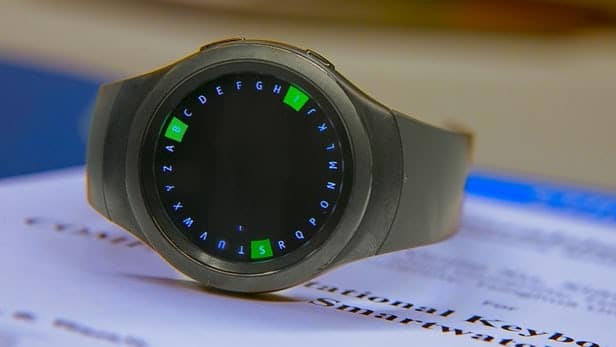New Rotational Keyboard Simplifies Smartwatch Texting

Given to only the top 5% of research papers, Stony Brook University assistant professor Xiaojun Bi received this year’s ACM CHI 2017 Honorable Mention Award for his groundbreaking study called “Compass: Rotational Keyboard on Non-Touch Smartwatches.” The Department of Computer Science professor co-authored the research and according to his findings, smartwatch wearers will soon have access to a new rotational keyboard designed specifically for entering text.
Solving the Smartwatch Problem

The knock on smartwatches has always been the lack of functionality with its touchscreens. With no virtual keyboard and a user interface too small to operate, manufacturers and researchers like Bi are scrambling to find a new, user-friendly way to operate a smartwatch. Whether it’s the Samsung Gear S3 or the Tag Heuer Modular 45, the best smartwatches of 2017 all come with state-of-the-art sensor technology but are lacking text entry functionality. Touchscreens, for example, are designed to fit on the user’s wrist so the interface is limited. The solution seems to be either extending the user interface or finding a new method of texting.
Armed with small 3D depth sensors worn on the user’s forearm, researchers at Saarland University and the Max Planck Institute for Computer Science created WatchSense – a smartwatch capable of recognizing index finger and thumb positions as they move on the back of the wearer’s hand. The gesture-based movement controls different functions of the user’s connected smartphone and is an extension of the smartwatch interface. WatchSense enables real-world interaction on the move, according to lead researcher Srinath Sridhar in a recent press release. “The current low-temperature sensors do not yet fit into a smartphone, but the trend is clear that in the near future smaller sensors will be integrated into the smartwatches.”
Stony Brook’s COMPASS Study

The team at Stony Brook University is introducing an entirely different approach to smartwatch interface functionality. COMPASS is “a text entry method based on the bezel of the watch allowing users to rotate three cursors.” Using a dial, Bi’s technology lets users seamlessly select which letter they want to type and once selected, the location of the cursors are then “dynamically optimized to reduce the distance of the next rotation.” This is a very similar the “predictive typing” function on your smartphone. It helps you formulate your word choice without needing to spell the entire word.
At first glance, COMPASS’ rotational keyboard seems to have a substantial learning curve. But that is not the case. According to a Stony Brook Newsroom press release, “with 90 minutes of practice, users increased their typing speed from 10 wpm (words per minute) to 12.5 wpm.” With a focus on building interactive systems, Bi and his Stony Brook team created a revolutionary algorithm that makes smartwatch interfaces more intuitive for the wearer.
Disrupting the Smartwatch Industry

With his research focused solely on Human Computer Interaction, Bi was the recipient of the 2017 Google Faculty Award. Co-authored by researchers from Tsinghua University (Beijing), the Key Laboratory of Pervasive Computing, and the Tsinghua National Laboratory for Information Science and Technology, the COMPASS smartwatch study is poised to disrupt the entire smartwatch industry. Manufacturers now have the ability to design smartwatches around comfort, design, and durability without having to compromise for interface deficiencies.





